2017-2019: catw 08 Mithridates
 The Year is 88 BC. The ancient world is a troubled place. The Romans are definitely consolidating an Empire, stretching an ageing republic to the limit. But Social War just ended with the defeat of the Italian allies by the Senate and Sulla became master of Rome, marching into the city with his army. A sacrilege never committed before. The latter would soon take his first command in the East, against a menacing Mithridates; The first Roman Civil War starts with a democratic uprising led by Gaius Marius (father of the famous reforms). At the same time, from the balkans a huge army composed of the Dardani, Scordisci, and the Maedi attack the Roman province of Macedonia. To give the scope and ferocity of the first Mithridatic war, King Mithridates VI of Pontus invades Greece, defeating the Roman forces four times in succession, conquering Bithynia, Phrygia, Mysia, Lycia, Pamphylia, Ionia and Cappadocia, all but dismantling the Roman province of Asia, rounding up and murdering Latins everywhere in a single day. He shows the most hatred stance against the Romans since Hannibal Barca.
The Year is 88 BC. The ancient world is a troubled place. The Romans are definitely consolidating an Empire, stretching an ageing republic to the limit. But Social War just ended with the defeat of the Italian allies by the Senate and Sulla became master of Rome, marching into the city with his army. A sacrilege never committed before. The latter would soon take his first command in the East, against a menacing Mithridates; The first Roman Civil War starts with a democratic uprising led by Gaius Marius (father of the famous reforms). At the same time, from the balkans a huge army composed of the Dardani, Scordisci, and the Maedi attack the Roman province of Macedonia. To give the scope and ferocity of the first Mithridatic war, King Mithridates VI of Pontus invades Greece, defeating the Roman forces four times in succession, conquering Bithynia, Phrygia, Mysia, Lycia, Pamphylia, Ionia and Cappadocia, all but dismantling the Roman province of Asia, rounding up and murdering Latins everywhere in a single day. He shows the most hatred stance against the Romans since Hannibal Barca.

FACTIONS:
New Mod, new timeframe, new Factions. CATW 08 is the most ambitious modification so far of the old catw 1.0 core. It share only 50% factions with the latter. Exit the Samnites, Iberians, Boii or Arverni, Macedonians, and many more. Only a fraction of the old world of 300 BC is still in place. Here is a comprehensive overview of those new factions, which occupied the 200-region strong map a better way than previous mods, due east. There is an Indian culture, an Arabian culture (Saba), an African kingdom (Kush), Persian culture (Media), Judaeans, even proto-mongols (Yuezhe) and Tocharians (Saka) and the Indo-Greeks. Therefore but its diversity and scope, this is the most ambitious version of CATW so far.Saba:
 The Sabean Kingdom was of course made famous by the Bible, through the fabled relation between the wealthy queen of this southern Arabian empire (called Sheba) and David, King of Israel. At the origin the kingdom comprised only two cities, Sana'a and Ma'rib, and the capital was later placed in Sirwah. The ancient Semitic civilization of Saba in Southern Arabia remains controversial. It is generally accepted now that it was located in southern Arabia, areas comprising new the Yemen and Arabian peninsula and was described as "the oldest and most important of the South Arabian kingdoms". In 275 BCE (from around 900 to 1200 BCE), long civil wars between Yemenite dynasties claiming kingship made it fall, replaced by the Kingdom of Himyar, the latter rising to fame between 110 BCE and 525 CE.
The Sabean Kingdom was of course made famous by the Bible, through the fabled relation between the wealthy queen of this southern Arabian empire (called Sheba) and David, King of Israel. At the origin the kingdom comprised only two cities, Sana'a and Ma'rib, and the capital was later placed in Sirwah. The ancient Semitic civilization of Saba in Southern Arabia remains controversial. It is generally accepted now that it was located in southern Arabia, areas comprising new the Yemen and Arabian peninsula and was described as "the oldest and most important of the South Arabian kingdoms". In 275 BCE (from around 900 to 1200 BCE), long civil wars between Yemenite dynasties claiming kingship made it fall, replaced by the Kingdom of Himyar, the latter rising to fame between 110 BCE and 525 CE.
The Sabaean kingdom legendary wealth came from the control of trade between the Indian ocean and the red sea, therefore, access to the Mediterranean, notably trade of frankincense and myrrh, incenses which were burned at altars. The Sabaean language and similar languages used in those rival kingdoms were, like Arabic, Semitic languages. The gold the caravans carried home with them made these also very wealthy. Rival kingdoms rose up in the area to challenge Saba, but the trade continued profitably for South until well into the Christian era, and the Sabaean civilization was the most reputed (among four kingdoms), demonstrated by an achievement such as the ma'rib dam, and the most durable as it had the largest standing army. It was able to develop a vigorous expansionist policy and conquered Qataban. It even send troops to conquer the east african coast (now Yemen). Little is known in detail of this army, but by 24BC, the Roman governor of Egypt and his legions, Marcus Aelius Gallus, was soundly defeated. The Sabaean army and its commander's confidence was also praised by the Qur'an.
Qataban was an ancient Yemeni kingdom, which heartland was located in the Baihan valley. The capital of Qataban was named Timna and was located on the trade route which passed through the other kingdoms of Hadramaut, Sheba and Ma'in. Chief deity was Amm, or "Uncle" while the Qatabans called themselves the "children of Amm". It became the most prominent Yemeni kingdom around 500 BCE, when its ruler held the title of the South Arabian hegemon, the Mukarrib, "priest-kings" or "federators" of Southern Arabia. About (800-400 bc) local political authority resided with the mlk, king of his own ethnic tribe but appointed to lead a council of southern tribes. It was later conquered and integrated in the Sabaean kingdom.
Kush:
 Kandake of Meroe. Kush existed from the early bronze age, as a southern rival to Egypt (and ruler for 21 generations), also known as the ancient kingdom in Nubia, and encompassing Meroe (and the Meroitic civilization) plus Napata. They settled in the southern Nile, Blue Nile, White Nile and River Atbara in what is now Sudan and South Sudan. Not only theur controlled the high Nile trade, but also raided Ethiopia and provided scores of mercenaries and warriors for the Egyptians. Ptolemaic Egypt still relied heavily on this "Nubians" to bolster its numbers. These very capable warriors fought in all its wars.
Kandake of Meroe. Kush existed from the early bronze age, as a southern rival to Egypt (and ruler for 21 generations), also known as the ancient kingdom in Nubia, and encompassing Meroe (and the Meroitic civilization) plus Napata. They settled in the southern Nile, Blue Nile, White Nile and River Atbara in what is now Sudan and South Sudan. Not only theur controlled the high Nile trade, but also raided Ethiopia and provided scores of mercenaries and warriors for the Egyptians. Ptolemaic Egypt still relied heavily on this "Nubians" to bolster its numbers. These very capable warriors fought in all its wars.
Ancient Kushite kingdom in 88 BC was ruled by the legendary Queen Kandake (Candace, now Candice). She was at war with the Romans according to Strabo in the 1st century BC. After initial victories of Candace Amanirenas against Roman Egypt, the Kushites were defeated and Napata sacked. But the destruction of the capital of Napata only was a blow to the Kushites and Candace soon engaged in combat the Romans again led by Petronius, which at the contrary seemed to have a revitalizing influence on the kingdom. In 22 BC, the Kushite attacked Qasr Ibrim and a new battle with Petronius legions apparently ended as a draw. By the end of the second campaign Petronius seemed to renounce dealing again with the kingdom which negotiating a peace treaty on favourable terms and a profitable trade agreement. She was preceded by Shanakdakhete (177 BCE–155 BCE) and succeded by Amanirenas (40 BCE–10 BCE). At the early days of the Empire, Kush became a client-state. Its last ruler was Lahideamani (306–314 CE).
Yuezhe:
 Fierce nomads from beyound the mountains, the Yuezhi are mentioned time and agin in ancient annals and are definitely part of these less-known ancient great nomadic kingdoms of Asia. They are mostly known by the chinese as the 月氏, Rouzhi in pinyin. These pastoralists lived in remote and arid grassland area in the western part of the modern Chinese province of Gansu. Hard-pressed by the agressive Xiongnu from the north, they were defeated in the 2nd century BC, splitting into the Greater Yuezhi (Dà Yuèzhī 大月氏) and Lesser Yuezhi (Xiǎo Yuèzhī 小月氏), migrating westwards.
Fierce nomads from beyound the mountains, the Yuezhi are mentioned time and agin in ancient annals and are definitely part of these less-known ancient great nomadic kingdoms of Asia. They are mostly known by the chinese as the 月氏, Rouzhi in pinyin. These pastoralists lived in remote and arid grassland area in the western part of the modern Chinese province of Gansu. Hard-pressed by the agressive Xiongnu from the north, they were defeated in the 2nd century BC, splitting into the Greater Yuezhi (Dà Yuèzhī 大月氏) and Lesser Yuezhi (Xiǎo Yuèzhī 小月氏), migrating westwards.
Greater Yuezhi initially migrated northwest into the Ili Valley (on the modern borders of China and Kazakhstan), where they reportedly displaced elements of the Sakas (Scythians). They were driven from the Ili Valley by the Wusun and migrated southward to Sogdia and later settled in Bactria, where they then defeated the Greco-Bactrian Kingdom. The Greater Yuezhi have consequently often been identified with Bactrian peoples mentioned in classical European sources, like the Tókharioi (Greek Τοχάριοι; Sanskrit Tukhāra) and Asii (or Asioi). During the 1st century BC, one of the five major Greater Yuezhi tribes in Bactria, the Kushanas (Chinese: 貴霜; pinyin: Guishuang), began to subsume the other tribes and neighbouring peoples. The subsequent Kushan Empire, at its peak in the 3rd century CE, stretched from Turfan in the Tarim Basin, in the north to Pataliputra on the Gangetic plain of India in the south. The Kushanas played an important role in the development of trade on the Silk Road and the introduction of Buddhism to China.
Most of the Lesser Yuezhi appear to have migrated southward into Tibet. However, some are reported to have settled among the Qiang people in Qinghai, and to have been involved in the Liangzhou Rebellion (184–221 CE). Others are said to have founded the city state of Cumuḍa (now known as Kumul and Hami 哈密) in the eastern Tarim. A fourth group of Lesser Yuezhi may have become part of the Jie people of Shanxi, who established the 4th Century AD Later Zhao state (although this remains controversial). While the Yuezhi have often been associated with artifacts of extinct cultures in the Tarim Basin, such as the Tarim mummies and the so-called Tocharian languages, the evidence for any such link is purely circumstantial.
Hasmonean Kingdom
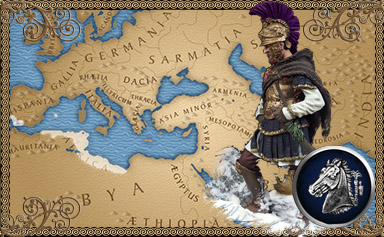 The roots of the Biblical state of Israel goes back far in time, and the country was assimilated by the Persians and then by the Seleucids. What was now as judea was part of the Seleucid Empire as a vassal state from 140 to 110, but became an Independent kingdom in 110 BC (until 63 BCE), known as the Hasmonean Kingdom. The Hasmonean dynasty ruled Judea and surrounding regions roughly between c. 140 and c. 116 BCE semi-autonomously from the Seleucids. After the Mithridatic wars, it became a client state of the Roman Republic (63–40 BCE) and then briefly of the Parthian Empire from 40 to 37 BCE.
The roots of the Biblical state of Israel goes back far in time, and the country was assimilated by the Persians and then by the Seleucids. What was now as judea was part of the Seleucid Empire as a vassal state from 140 to 110, but became an Independent kingdom in 110 BC (until 63 BCE), known as the Hasmonean Kingdom. The Hasmonean dynasty ruled Judea and surrounding regions roughly between c. 140 and c. 116 BCE semi-autonomously from the Seleucids. After the Mithridatic wars, it became a client state of the Roman Republic (63–40 BCE) and then briefly of the Parthian Empire from 40 to 37 BCE.
The nature of the army is little known, but through Roman eyes in the 60 BC civil war, and ancient accounts of local auxiliaries in the Seleucid Army. Royal Guards were Herodian palace spearmen/swordsmen, heavily armoured. Judaean spearmen were used by the Seleucid Army and resembled average thureophoroi. They were able to act as javelineers as well and had a sword for close combat. There is no indication of a local phalanx. Seleucid influence made of the adoption of the feared chariot (Merkava), also an age-old Judaean weapon, preferably mounting archers. Foot archers, both regular (driven from the surrounding villages) and elite ones, armoured and used as an auxiliary guard for the city of Jerusalem. The bulk of light infantry comprised Judaean javelineers but above all slingers (like the famous "zealots", driven from villages in the area, mostly herdsmen). Cavalry was important too. In particular eastern-influenced horse archers, both regular and armoured (mounted garrisons) which had to face the potential threat of Parthian incursions. There were also auxiliaries, in particular various troops that can be supplied by the Nabataeans, as allies or mercenaries.
The Galatians
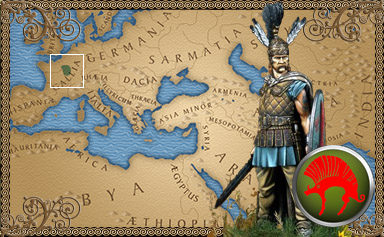 The Galatian kingdom was established after a Gallic army crossed the Hellespont to the invitation of Nicomedes, king of bithynia in 280 BC to help him warring against his neighbours. They established themselves in Anatolia, and started settling from a small core of 10,000 fighting men and about the same number of women and children, divided into three tribes, Trocmi, Tolistobogii and Tectosages. Defeated by the Seleucids under Antiochus I, they nevertheless raided Phrygia, and the arrival of new Celtic after immigrants felt strong enough to overrunning Bithynia and supported themselves by plundering neighbouring countries. What we know about ancient Galatian warriors ? They were never really "hellenized", although often displaying Greek gear (like helmets and body armour) by taste. They retained their gallic tactics for which they were famed for, but probably relied more on swords than spears due to their plunder. Axemen, and some archers, javelineers (youth) and slingers were also part of the mix. Chieftains retained a host of close bodyguards, very well equipped with chainmails and longswords, while the rest of the band comprised unarmoured or lightly armoured spearmen and swordsmen. Cavalry was also present, reserved to the aristocratic elite, mounted prefferably on large, imported Nisean horses. There were also local cappadocian axemen and militias that could have been raised, although reluctantly. In time, local mercenaries went to local gear (like the famous depciction of a masked galatian in seleucid service). Galatian mercenaries acted generally as schock troops.
The Galatian kingdom was established after a Gallic army crossed the Hellespont to the invitation of Nicomedes, king of bithynia in 280 BC to help him warring against his neighbours. They established themselves in Anatolia, and started settling from a small core of 10,000 fighting men and about the same number of women and children, divided into three tribes, Trocmi, Tolistobogii and Tectosages. Defeated by the Seleucids under Antiochus I, they nevertheless raided Phrygia, and the arrival of new Celtic after immigrants felt strong enough to overrunning Bithynia and supported themselves by plundering neighbouring countries. What we know about ancient Galatian warriors ? They were never really "hellenized", although often displaying Greek gear (like helmets and body armour) by taste. They retained their gallic tactics for which they were famed for, but probably relied more on swords than spears due to their plunder. Axemen, and some archers, javelineers (youth) and slingers were also part of the mix. Chieftains retained a host of close bodyguards, very well equipped with chainmails and longswords, while the rest of the band comprised unarmoured or lightly armoured spearmen and swordsmen. Cavalry was also present, reserved to the aristocratic elite, mounted prefferably on large, imported Nisean horses. There were also local cappadocian axemen and militias that could have been raised, although reluctantly. In time, local mercenaries went to local gear (like the famous depciction of a masked galatian in seleucid service). Galatian mercenaries acted generally as schock troops.
The Galatian state comprised tribes divided into cantons, each governed by a chief ('tetrarch') with powers limited only in cases of murder, which were tried before a council of 300 cantons notables(twelve cantons) meeting twenty miles southwest of Ancyra, at the Drunemeton "holy place of oak". The local Cappadocians were left in control of the towns and the land, paying tributes to their new overlords, a military aristocracy that lived in fortified farmsteads and their warrior bands.
Reputed warriors, respected by both the Greeks and Romans, were often hired as mercenaries (sometimes fighting on both sides). If some armed bands ravaged the western half of Asia Minor, as allies of local kingdoms (like the Bythinians), they sided eventually with the renegade Seleucid prince Antiochus Hierax. He tried to defeat Attalus from Pergamon but the Hellenized cities rallied under Attalus's banner, inflicting several crushing defeats on the Galatians and Seleucids. In 232 the Galatians were forced to settle permanently in the region later known as "Galatia". The Dying Gaul statue displayed in Pergamon commemorated the event, one of the rare depiction by Greeks of a gaul.
Eventually Galatia's borders were formally recognized and later the Attalids employed their services in several occasions. In the early 2nd century BC, they fought hard with Antiochus the Great over Asia Minor. In 189 BC, Rome sent Gnaeus Manlius Vulso on an expedition against the Galatians and defeated them. The kingdom declined and fell under Pontic influence, before being finally freed by the Mithridatic Wars, siding with Rome. In 64 BC, Galatia became an official client-state of the Roman empire, and three chiefs were now appointed to represent the tribes (Tolistobogii -West, Trocmii -East, Tectosages -Center, Ancyra). But this arrangement fell when one of these tetrarchs, Deiotarus claimed sole authority over Galatian lands, finally recognized by the Romans as "king" of Galatia. He died and the Romans eventually given the power to a Roman general close to Brutus and Cassius, Amyntas. He was deposed and replaced when Augustus took over the region, which became a Roman province, part of the Empire.
The Saka
 The Saka: The Eastern Scythians, also called locally "Saka" and known as the "sai" by the Chinese, actually merits their title of "Royal Scythians". Contrary to their western connterparts, long since conquered and assimilated by the Sarmatians, the Saka rauka remains unbowed and undefeated. Better, they are stronger than ever, bound to conquer the world. They launched raids after raids, once extending their reach to Arachosia.
The Saka: The Eastern Scythians, also called locally "Saka" and known as the "sai" by the Chinese, actually merits their title of "Royal Scythians". Contrary to their western connterparts, long since conquered and assimilated by the Sarmatians, the Saka rauka remains unbowed and undefeated. Better, they are stronger than ever, bound to conquer the world. They launched raids after raids, once extending their reach to Arachosia.
After 50 BC, They started to attack the Indo-Greeks of Bactria and Sogdiana, Arachosia, and then raided south and turned East, into India itself. They migrated into Gandhara, Sindh, Kashmir, Punjab, Haryana, Rajasthan, Gujarat and Maharashtra) from the middle of the 2nd century BC to the 4th century AD. They took advantage of the decomposition of the former Mauryan Empire and took a durable foothold in the region, raiding nearby kingdoms.
Satavahana Empire
 The Mauryan Empire disappeared in 180 BCE, along with its last ruler, Brihadratha. The subcontinent was ruled by a collection of petty kingdoms. On the West coast was situated the Satavahana Empire, claiming the natural inheritance of the Maurya. This Empire was at war with its eastern neighbour, the Shunga Empire, Kalinga (Mahameghavahana dynasty) and the Indo-Scythians to the North. The dynasty reached its zenith under the rule of Gautamiputra Satakarni and his successor Vasisthiputra Pulamavi, but the kingdom fragmented by the early 3rd century CE. This dynasty issued a state coinage with images of their rulers, formed a cultural and economical bridge with the southern tip of India, supported Brahmanism, Buddhism, and promoted Prakrit literature.
The Mauryan Empire disappeared in 180 BCE, along with its last ruler, Brihadratha. The subcontinent was ruled by a collection of petty kingdoms. On the West coast was situated the Satavahana Empire, claiming the natural inheritance of the Maurya. This Empire was at war with its eastern neighbour, the Shunga Empire, Kalinga (Mahameghavahana dynasty) and the Indo-Scythians to the North. The dynasty reached its zenith under the rule of Gautamiputra Satakarni and his successor Vasisthiputra Pulamavi, but the kingdom fragmented by the early 3rd century CE. This dynasty issued a state coinage with images of their rulers, formed a cultural and economical bridge with the southern tip of India, supported Brahmanism, Buddhism, and promoted Prakrit literature.
Militarly, there was a consummated art of war, quite ancient between petty kingdoms, with army composition and tactics refined to a very high degree through centuries of warfare. As registered by the vedas, there were many colorful formations used at that time, most of which has been carefully recorded and often poetically associated with flowers or animals. The Ksatriya, were the hereditary warrior class who formed the spine of the professional army; mThere were also mercenaries and freebooters hired as individuals seeking military adventure; troops provided by corporations or guilds; troops supplied by subordinate allies; deserters from the enemy; wild forest and tribesmen. These were not conscript armies as they comprised professional warrior aristocrats and other professionals fed, equipped, trained, paid, and otherwise maintained at great cost to the state. Otherwise levies formed the bulk of the armies.

Satavahana depiction of the city of Kushinagar in the War over the Buddha's Relics.
Combined-arms tactics seems to have been largely influenced by the nearby Chinese, that united at that time, also the era of Sun-Tsu. The basis core of units were twelve men were formed into three units to form a company, then three would form the battalion and again three of these, the aksauhini, or “army,” comprised of 21,870 patti. A sub-division called the samavyuha was equivalent to a Roman legion. For weaponry, bamboo was used for all kind of spears and bows, while exotic armor like Shagreen, but most often simple goat and ox raw skin. Armour war reserved to the Elites, which also wielded a longsword called the nistrimsa.
The Matsya Purana mentions the Andhra dynasty ruling for around 450 years and the Satavahana can be dated to the 3rd century BCE. Megasthenes mentioned a powerful tribe named "Andarae", whose king maintained an army of 100,000 infantry, 2,000 cavalry and 1,000 elephants. According to one version of the theory Simuka succeeded the Mauryans.
Media Atropatene
 The far east Media Atropaenian kingdom was riveted between Parthia south, Armenia and the Caspian Sea. This was a remote and bare land or rich history, the birthplace of the Median empire, later assimilated to the Persian Empire, with potential for greatness. For the whole duration of the Mithridatic wars, Media Atropatene was ruled by king Ariobarzanes I (c. 85 BC – 56 BC). The kingdom was independent soon enough, circa 323 BC when the actual satrap refused to submit to Seleucus. The kingdom was then known simly as "Atropatene". They nevertheless reclaimed inheritance from the old Persian Empire. They ended as vassals of the Arsacids. A king Mithridates (100 BC – 66 BC) ruled as son of Tigranes the Great. The country was in part desertic, with more fertile lands towards the SW coast of the Caspian sea. Fishing and trade there bring some extra revenue, and some profitable trade roads passed through the territory.
The far east Media Atropaenian kingdom was riveted between Parthia south, Armenia and the Caspian Sea. This was a remote and bare land or rich history, the birthplace of the Median empire, later assimilated to the Persian Empire, with potential for greatness. For the whole duration of the Mithridatic wars, Media Atropatene was ruled by king Ariobarzanes I (c. 85 BC – 56 BC). The kingdom was independent soon enough, circa 323 BC when the actual satrap refused to submit to Seleucus. The kingdom was then known simly as "Atropatene". They nevertheless reclaimed inheritance from the old Persian Empire. They ended as vassals of the Arsacids. A king Mithridates (100 BC – 66 BC) ruled as son of Tigranes the Great. The country was in part desertic, with more fertile lands towards the SW coast of the Caspian sea. Fishing and trade there bring some extra revenue, and some profitable trade roads passed through the territory.
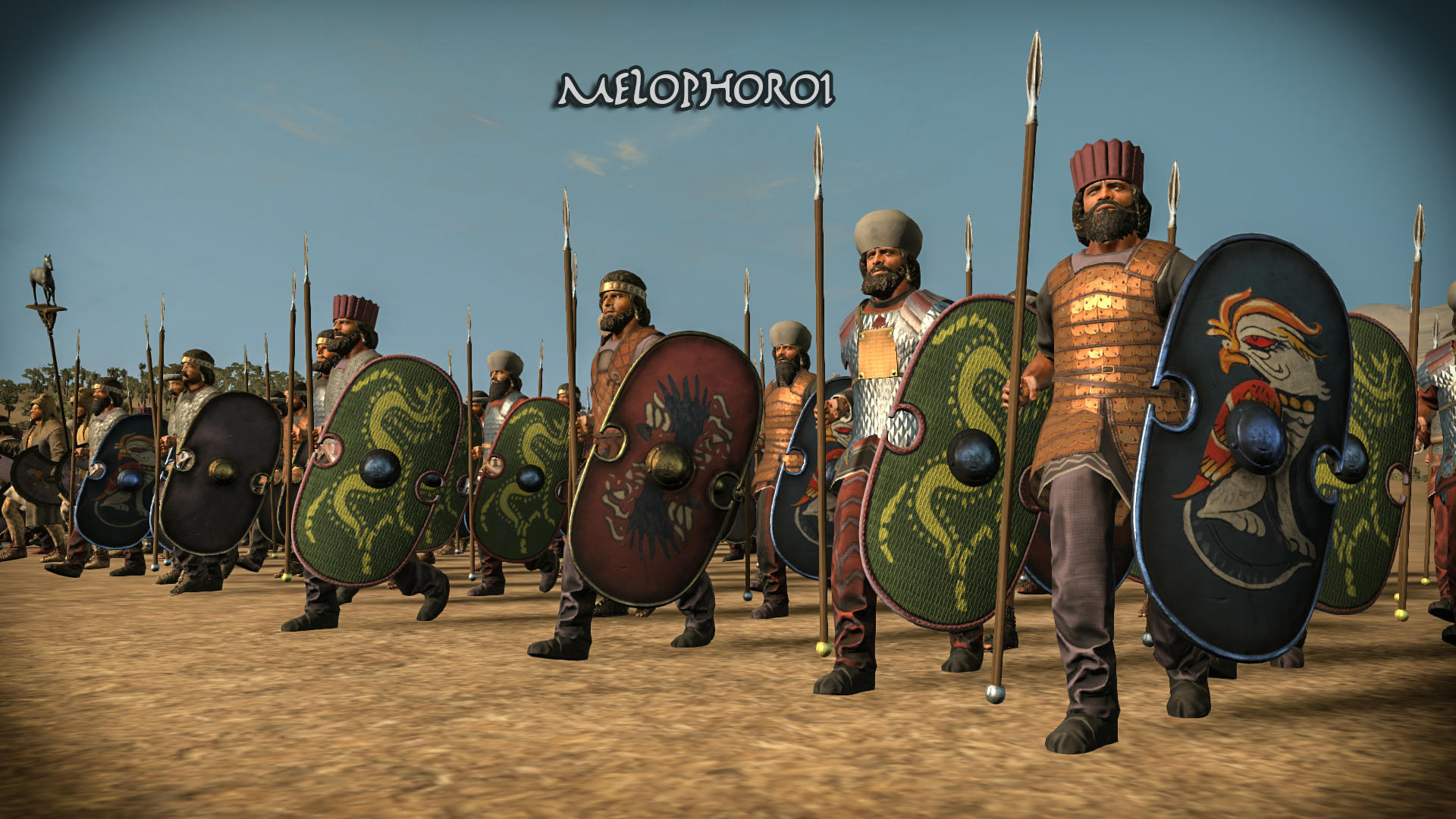
The standing army was Persian in every bit, with a long tradition going back to the fundation of the Persian Empire. The usual mix of Sparabara protecting scores of archers armed with the curved bows, Takabara to deal assaults, a kind of elite archer/spearmen guard recalling the Immortals, javelin cavaly, horse archers and camel-borne units completed the picture. No greek or Hellenistic influence there.
Koinon Indohellenon
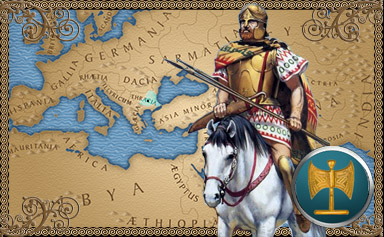 The Indo-Greek Kingdom took the succession of the Bactrian kingdom, once merged with nearby kingdoms, all former Seleucid Empire far east province. In 100 BC, the Greeks has been pushed eastwards by the great Saka invasion to the mountains borderings india, rugged lands and valleys called Arachosia, Kapisa, and Panchanada in the wide untamed expenses of NW India, on the foothills of the Himalaya. They settled in a cohort of north indian settlements including the kingdom of Taxila, which became the Indian capital of this new composite kingdom. Finances came from the trade with China, passing above India, then desunited and in turmoil after the fall of the Mauryan Empire.
The Indo-Greek Kingdom took the succession of the Bactrian kingdom, once merged with nearby kingdoms, all former Seleucid Empire far east province. In 100 BC, the Greeks has been pushed eastwards by the great Saka invasion to the mountains borderings india, rugged lands and valleys called Arachosia, Kapisa, and Panchanada in the wide untamed expenses of NW India, on the foothills of the Himalaya. They settled in a cohort of north indian settlements including the kingdom of Taxila, which became the Indian capital of this new composite kingdom. Finances came from the trade with China, passing above India, then desunited and in turmoil after the fall of the Mauryan Empire.
This Hellenistic kingdom covering various parts of the northwest regions of modern Afghanistan and Pakistan, but suffered until the christian era from internal unstability, being ruled by than thirty kings, often in conflict with each other. The kingdom was kickstarted by Graeco-Bactrian king Demetrius which invaded the subcontinent early in the 2nd century BC. Most celebrated Indo-Greek ruler became Menander (Milinda). He had his capital at Sakala in the Punjab (present-day Sialkot, Punjab, Pakistan) and ruled from 165/155 to 130 BC. Part of this fame there came from the fact Menander adopted the Buddhist faith early on, and the tradition went on until the fall of the Kingdom in AD 10. From there, the kingdom was assimilated by the Indo-Parthians, also called the Kushan Empire, first subjugated by the Kushan branch of the Yuezhi.
On the military standpoint, troops showed round helmets in the Greco-Bactrian style, or the flat kausia of the Macedonians. Weapons were spears, swords, and longbow, especially the Gorytos which started to appear in 100 BC. It was fielded as customary by Indo-Greek horsemen by 90 BC, which adopted nomadic warfare traits from the nearby Saka and Yuezhi. Equestrian tradition was strong, armies fielding a large proportion of horsemen, and elephants, but also war chariots. Under Menander, the 62,000 strong armies counted elephants, cavalry, bowmen, and soldiers on foot, and is described counting about 60,000 infantry, 1000 cavalry, 700 elephants by Kalinga, Kharavela. Roman writer Justin also spoke of these numbers when describing Greco-Bactrian Eucratides warring with Indo-Greek Demetrius II. Opposing forced of Saka and Yuezhi often numbered between 100,000 and 200,000 mounted archer warriors. Here in catw, the former bactrian roster was called upon, mixed with indian auxiliaries.
OLD FACTIONS
Outside Rome, the Iberians are almost gone, only the Galicians stays independent, as client-state. Same for the Numdians, and the Gauls, the Britannic and Germanic tribes. However the Seleucids are definitively on their last breath, ready for the taking, while the Ptolemies, also sometimes strifed with civil war, are also considered as a quasi-client state of Rome. They feed the city after all. The Greek Cities are a colletion of small independent states spread out between mainland Greece, the Aegean and Asia Minor. They represents old peoples like the Carians and Phrygians among others. Other rose to new heights, like the Parthians (that pretty much conquered the entire Seleucid Empire but Syria) and Armenia took the rest under its most legendary ruler, Tigranes "The Great".Pontus
 Mithridates VI Eupator (120–63 BC). The legendary ruler who decided of a last stand against the Romans in the East. This extraordinary character is the very subject of this mod, the one which confronted the Romans in an epic struggle through three wars. The Kingdom of pontus was first founded by an adventurer, Mithridates I Ktistes (281–266 BCE) friend of Demetrios (the future Poliorcete), son of Antigonos Monophtalmos, heir of the throne of Macedon. His dynasty helped securing from nothing a sizable kingdom, then Empire through his successors. But no-one could equal the sixth sovereign of what became eventually an Empire living from the control of the Silk road and the black sea, including far north provinces like the ancient bosphoran provinces (Now Crimea, Ukraine).
Mithridates VI Eupator (120–63 BC). The legendary ruler who decided of a last stand against the Romans in the East. This extraordinary character is the very subject of this mod, the one which confronted the Romans in an epic struggle through three wars. The Kingdom of pontus was first founded by an adventurer, Mithridates I Ktistes (281–266 BCE) friend of Demetrios (the future Poliorcete), son of Antigonos Monophtalmos, heir of the throne of Macedon. His dynasty helped securing from nothing a sizable kingdom, then Empire through his successors. But no-one could equal the sixth sovereign of what became eventually an Empire living from the control of the Silk road and the black sea, including far north provinces like the ancient bosphoran provinces (Now Crimea, Ukraine).
Ptolemais
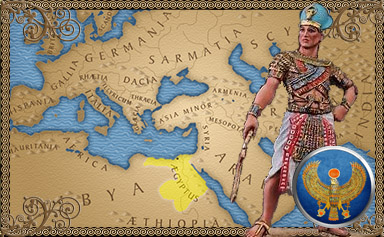 Ptolemy IX (88-80 BC) - Ptolemaic Egypt remained in appareance the only strong Hellenistic state still standing in the East. But these were only on the surface. In reality since Ptolemy VII Neos Philopator, the country was in a deep pediod of dynastic troubles, bordering on civil war. In 88 BC Prolemy X returned to the throne, and retained it until his death in 80 BC. He was succeeded by Ptolemy XI Alexander II, the son of Ptolemy X. He was lynched by the Alexandrian mob after murdering his stepmother, who was also his cousin, aunt and wife. These sordid dynastic quarrels left Egypt so weakened that the country became a de facto protectorate of Rome, which had by now absorbed most of the Greek world.
Ptolemy IX (88-80 BC) - Ptolemaic Egypt remained in appareance the only strong Hellenistic state still standing in the East. But these were only on the surface. In reality since Ptolemy VII Neos Philopator, the country was in a deep pediod of dynastic troubles, bordering on civil war. In 88 BC Prolemy X returned to the throne, and retained it until his death in 80 BC. He was succeeded by Ptolemy XI Alexander II, the son of Ptolemy X. He was lynched by the Alexandrian mob after murdering his stepmother, who was also his cousin, aunt and wife. These sordid dynastic quarrels left Egypt so weakened that the country became a de facto protectorate of Rome, which had by now absorbed most of the Greek world.
Gallic tribes
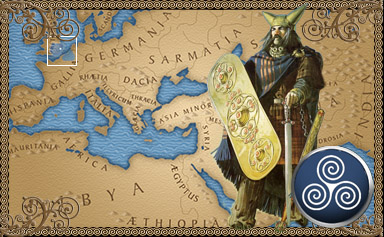 In 88 BC Gaul was still independant, despite being divided betwene multiple nations of confederations. The country was developed, with a large and dense network of wooden roads large enough for chariots that extended into Germania and Spain. Reknowned craftsmen they exported many artefacts while being at the same time good consumers for Roman and Greek porducts, luxury goods and wine, and their appetite was insatiable, fed by a legions of gold mines. The Gauls were a tempting prize for the Romans then installed in the southern provincia, divided as they were. They only lacked a leader like the future vercingetorix, then still unborn.
In 88 BC Gaul was still independant, despite being divided betwene multiple nations of confederations. The country was developed, with a large and dense network of wooden roads large enough for chariots that extended into Germania and Spain. Reknowned craftsmen they exported many artefacts while being at the same time good consumers for Roman and Greek porducts, luxury goods and wine, and their appetite was insatiable, fed by a legions of gold mines. The Gauls were a tempting prize for the Romans then installed in the southern provincia, divided as they were. They only lacked a leader like the future vercingetorix, then still unborn.
Gaul was then a testimony of rival confederations, the Senone to the north and the Arverni south, with the Aedui, Rome's ally, counting points. To the north, fierce Belgians are quite a match, and to the east, the dark forest of germany were not a prized destination either. On the other side of the channel, proud Britons were more trade allies than potential prey. South, the Aquitanni remains undaunted, proud of their Celtiberian nature. East, the Helveti are on the move. But that's another story...
Germanic tribes
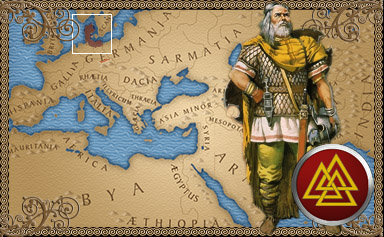 Germanic Tribes as a whole covered a wide area. The core was the Suebi hearthland, but there were many Germanic Nations to account for, like marcomanni in the south ("Men of the march"). Around 100 BC, the "Suebi" confederation (as described by Tacitus in 100 AD, so about 200 years after) was gathering momentum. In fact the term broadly classified Germanic speakers in th eyes of Caesar, and therefore the Romans in general. Recently, a mass-migration of Cimbri and Teutones ended disastrously in Southern France, as Marius showed his recklessness and brutal efficiency. On Belgian tribe on the frontier (potential target for you) was the Aduatuci, strongly influenced by Celtic culture, to the point of being more a germano-celtic border people rather than a germanic tribe (at least accrding to Caesar).
Germanic Tribes as a whole covered a wide area. The core was the Suebi hearthland, but there were many Germanic Nations to account for, like marcomanni in the south ("Men of the march"). Around 100 BC, the "Suebi" confederation (as described by Tacitus in 100 AD, so about 200 years after) was gathering momentum. In fact the term broadly classified Germanic speakers in th eyes of Caesar, and therefore the Romans in general. Recently, a mass-migration of Cimbri and Teutones ended disastrously in Southern France, as Marius showed his recklessness and brutal efficiency. On Belgian tribe on the frontier (potential target for you) was the Aduatuci, strongly influenced by Celtic culture, to the point of being more a germano-celtic border people rather than a germanic tribe (at least accrding to Caesar).
"Germanni" means either "neighbours" and "spear carriers" or a combination of both, if named and described from nearby Celts. In all cases, Germanic armies at that time heavily relied on the spear, as a light weapon. Tacitus described the specific, distinctive shape of these, wide, short and triangular. Scientifically, the tribes considered here represented the Jastorf culture, Nordic culture (actual denmark), the Western Harpstedt-Nienburger group and southern Gubin culture and House Urns cultures with a bit of the SE Przeworsk culture. Germanic peoples came to us through three main authors, Pomponius Mela, Pliny the Elder, and Tacitus. According to Tacitus, the Suevi group counted the Semnones, Langobardi, Reudigni, Aviones, Anglii, Varini, Eudoses, the Suardones, and Nuithones. He also made a distinction between the coastal tribes which called themselves the Ingævones, the interior tribes called the Herminones, and the external tribes called the Istævones.
About Germanic warfare: Thes tribes only mustered limited numbers of combatants, and so avoided pitch battles, instead focusing on quick raids. The purpose of Germanic raids was generally not to gain territory, but rather to capture resources and secure prestige. These raids were conducted by irregular troops, often formed along family or village lines, in groups of 10 to about 1,000. Leaders of unusual personal magnetism could gather more soldiers for longer periods, but there was no systematic method of gathering and training men, so the death of a charismatic leader could mean the destruction of an army. Armies also often consisted of more than 50 percent noncombatants, as displaced people would travel with large groups of soldiers, the elderly, women, and children. War leaders who were able to secure ample booty for their retainers were able to grow accordingly by attracting warrior bands from nearby villages.
Large bodies of troops, while figuring prominently in the history books, were the exception rather than the rule of ancient warfare. Thus a typical Germanic force might consist of 100 men with the sole goal of raiding a nearby Germanic or foreign village. Thus, most warfare was at their barbarian neighbors.According to Roman sources, when the Germanic Tribes did fight pitched battles, the infantry often adopted wedge formations, each wedge being led by a clan head. Legitimacy for leaders among the Germans resided in their ability to successfully lead armies to victory. Defeat on the battlefield at the hands of the Romans or other "barbarians" often meant the end for a ruler and in some cases, being absorbed by "another, victorious confederation."
Weapons used by the Germanic tribes varied. Some of them used axes, throwing javelins, spears, bows and arrows along with swords. Most of the swords used by the Germanic warriors were those captured from Roman soldiers until the 4th century when German blacksmiths began making the best steel in Europe. Body armor was rarely worn and when it was, it was light by comparison to what the Romans employed; only war leaders wore helmets on the battlefield. Commandeering of Roman weaponry was widespread and the acquisition of the superior Roman armaments allowed the Germanic leaders to exert their power in ways not previously available. It also meant fierce inter-Germanic rivalry which constituted the larger power blocks of the Germanic world.
Arche Seleukoi
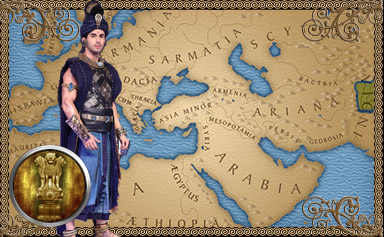 In 88 Bc the Seleucid Empire was crumbling, living on its last breath. The decay began with Demetrius I Soter in 161 BC and only grew as Parthia and Armenia grew stronger and hungry for land westwards, unstoppable. The silk road and far east provinces were long gone. The Seleucids in 88 BC were in total collapse, only being used as a buffer state. In the wars in Anatolia between Mithridates VI of Pontus and Sulla of Rome, the Seleucids were largely left alone by both major combatants.
In 88 Bc the Seleucid Empire was crumbling, living on its last breath. The decay began with Demetrius I Soter in 161 BC and only grew as Parthia and Armenia grew stronger and hungry for land westwards, unstoppable. The silk road and far east provinces were long gone. The Seleucids in 88 BC were in total collapse, only being used as a buffer state. In the wars in Anatolia between Mithridates VI of Pontus and Sulla of Rome, the Seleucids were largely left alone by both major combatants.
Mithridates' ambitious son-in-law, Tigranes the Great, king of Armenia, however, saw opportunity for expansion in the constant civil strife to the south. In 83 BC, at the invitation of one of the factions in the interminable civil wars, he invaded Syria and soon established himself as ruler of Syria, putting the Seleucid Empire virtually at an end.
Seleucid rule was not entirely over, however. Following the Roman general Lucullus' defeat of both Mithridates and Tigranes in 69 BC, a rump Seleucid kingdom was restored under Antiochus XIII. Even so, civil wars could not be prevented, as another Seleucid, Philip II, contested rule with Antiochus. After the Roman conquest of Pontus, the Romans became increasingly alarmed at the constant source of instability in Syria under the Seleucids. Once Mithridates was defeated by Pompey in 63 BC, Pompey set about the task of remaking the Hellenistic East, by creating new client kingdoms and establishing provinces. While client nations like Armenia and Judea were allowed to continue with some degree of autonomy under local kings, Pompey saw the Seleucids as too troublesome to continue; doing away with both rival Seleucid princes, he made Syria into a Roman province.
Koinon Hellenon
 In 88 BC actual Turkey, ancient Asia minor was in fire. The Romans extended east as far as the coast and well into the interior, subjugating and making provinces out of Phrygia and Pergamum, while Lycia, Pisidia, Bithynia, Silicia, and the troubesome Galatians were more or less under the influence of the Romans, while Cappodocia and Lycaonia were under influence of nearby Pontus. This is a quite difficult position to hold, sandwiched between a very ambitious Pontic Empire and Romans on their way to conquer the world. The Greek peninsula came under Roman rule during the 146 BC conquest of Greec (Battle of Corinth), Macedonia became a Roman province and the prefect controlled southern Greece. Athens enjoyed for some time a level of freedom, the greek culture still being admired by the Romans, like Sparta later kept in a "cocoon" for Roman tourists. Some Greek poleis managed to maintain indeed a partial independence and no taxation but Athens and other Greek cities revolted in 88 BC. The same year, the city was sacked by a Roman force led by Sulla.
In 88 BC actual Turkey, ancient Asia minor was in fire. The Romans extended east as far as the coast and well into the interior, subjugating and making provinces out of Phrygia and Pergamum, while Lycia, Pisidia, Bithynia, Silicia, and the troubesome Galatians were more or less under the influence of the Romans, while Cappodocia and Lycaonia were under influence of nearby Pontus. This is a quite difficult position to hold, sandwiched between a very ambitious Pontic Empire and Romans on their way to conquer the world. The Greek peninsula came under Roman rule during the 146 BC conquest of Greec (Battle of Corinth), Macedonia became a Roman province and the prefect controlled southern Greece. Athens enjoyed for some time a level of freedom, the greek culture still being admired by the Romans, like Sparta later kept in a "cocoon" for Roman tourists. Some Greek poleis managed to maintain indeed a partial independence and no taxation but Athens and other Greek cities revolted in 88 BC. The same year, the city was sacked by a Roman force led by Sulla.
On the military side, these cities married the latest Hellenistic warfare reforms (Ascepiodotos, 147 BC) with local infantry and cavalry, which already had distinctive attributes, equipments, appearance and tactics. This was especially true of the Phrygians (strong ancient persian influence), Carians (greek-thracian), Bithynians (thracian). Athens of course reformed its army along these lines. Hoplites were replaced by cheaper and more mobile thureophoroi. Phalanx stayed a staple of warfare, but a more mobile infantry was privileged to take care of the flanks and rear. The late thorakitai, a swordsman, was the nearest type to a Roman infantry at that stage.
Palhava
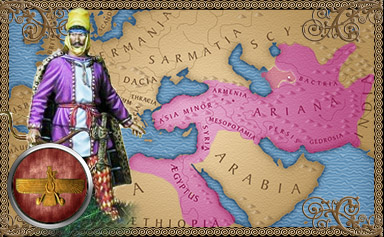 The Parthian Empire in 88 BC, under the Arsacid dynasts reached almost its greatest extension, threatening what is left of the Seleucid Empire in Coile-Syria, but with powerful Armenians in the north, led by a King which fears nothing. Should Media Atropaene fall into its grip, Caspian sea access would be secured. From 105 BC the power and influence of the Parthian noble houses reached a level of feodal-like opposition to the monarch, but will also proved to be the culprit of the fall of the dynasty in the hands of the Sassanids.
The Parthian Empire in 88 BC, under the Arsacid dynasts reached almost its greatest extension, threatening what is left of the Seleucid Empire in Coile-Syria, but with powerful Armenians in the north, led by a King which fears nothing. Should Media Atropaene fall into its grip, Caspian sea access would be secured. From 105 BC the power and influence of the Parthian noble houses reached a level of feodal-like opposition to the monarch, but will also proved to be the culprit of the fall of the dynasty in the hands of the Sassanids.
From about 130 BC already, Parthia eastern fringes were weakened by raids and invasions by Sakas, the Yuezhe or Massagetae. Local Arsacid dynasts paid their share whereas the Romans and pontus threat became manifest on their western borders. In these desperate fights, Phraates II and Artabanus I died in combat.
At that point, parthian warfare did not changed a lot. Median Cavalry formed a powerful auxiliary cavalry, while the bulk of Parthian armies were entirely mounted, made by local dynastic hosts, formed by the noble cavalry, superb, heavy cataphacts, archers and lancers which obeyed to same code of "chivarly". They ruled over domains and raised local horsemen mounted on small local, nervous breeds. They acted as horse-archers and javelineers, skirmishing but avoiding combat. Their legendary composite bow was then unmatched, together in range, power and speed. Above all, they practice a fainted retreat followed by the infamous "parthian shot", firing back an arrow while gallop. A single volley that was devasating for Crassus Legions at Carrhae, in 53 BC. This was the definitive blow to Roman confidence for the East. Later with the Empire, they would be defeated in even more dramatic way by the Sassanids (which managed to capture two emperors).
Hayasdan
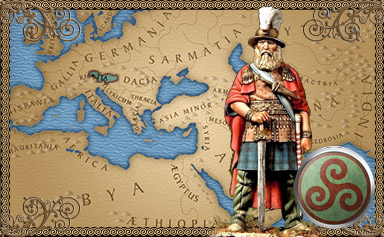 Tigranes the Great (95–55 BC). In the 1th century B.C., Armenians achieved a remarkable rise, reaching its height between 95 and 66 BC under Tigranes the Great, becoming the most powerful kingdom of its time east of the Roman Republic. A member of the Artaxiad Royal House, he managed to bring his mountainous kingdom to the status of an empire, stretching far and wide from the Caucasus to Lebanon. In 83 BC, he managed to intervene during the Seleucid fight for the throne of Syria, which later choose Tigranes as the protector of their kingdom. The rest of the Seleucid Empire was quickly taken and integrated, namely Phoenicia and Cilicia. he then extended southwards, reaching the borders with Ptolemais at Akko. He then reached nortwards to the Pontic Alps. From 85 BC he assumed the ancient Achaemenid title of King of Kings, not even claimed by the Parthians. When Pontic ruler Mithridates found refuge at the Arsacid court, Tigranes had no choice but an open confrontation with Rome.
Tigranes the Great (95–55 BC). In the 1th century B.C., Armenians achieved a remarkable rise, reaching its height between 95 and 66 BC under Tigranes the Great, becoming the most powerful kingdom of its time east of the Roman Republic. A member of the Artaxiad Royal House, he managed to bring his mountainous kingdom to the status of an empire, stretching far and wide from the Caucasus to Lebanon. In 83 BC, he managed to intervene during the Seleucid fight for the throne of Syria, which later choose Tigranes as the protector of their kingdom. The rest of the Seleucid Empire was quickly taken and integrated, namely Phoenicia and Cilicia. he then extended southwards, reaching the borders with Ptolemais at Akko. He then reached nortwards to the Pontic Alps. From 85 BC he assumed the ancient Achaemenid title of King of Kings, not even claimed by the Parthians. When Pontic ruler Mithridates found refuge at the Arsacid court, Tigranes had no choice but an open confrontation with Rome.
Lucullus striked and took Tigranes by surprise, only resisted by Mithrobazanes, which was later named commander in chief of the Armenian forces. However his army was beaten and the road to Tigranocerta open. Soon, the Battle of Tigranocerta saw the crishing defeat of what was left of the Armenian army. The city was simply open by disgruntled guards. Later in 68 BC, the Romans met before the old capital of Artaxata Tigranes and Mithridates combined Armeno-Pontian army of 70,000 men, but again defeated them, proving that no standing army with infantry and cavalry could face off the Romans at that point. However Lucullus proved later unable to capture both generals and put an end to the war. His troops ultimately refused to go further and Lucullus was recalled by the Senate and replaced by Pompey. With the younger Tigranes on his side, he succeeded in having Tigranes the Great surrendering. Interestingly enough, in The Art of War (1521), Niccolò Machiavelli attributed Tigranes military failure to his excessive reliance on his cavalry. The Armenian army used to be balanced, but with indeed a much larger emphasis on cavalry compared to the infantry-based Roman Army. From a Persian core, the army comprised spearmen levies (Kentronakan) and an aristocratic cavalry (Azat). Tigranes II army included chariots, 12,000 heavy cavalrymen including cataphracts, 12,000 mounted archers, and 120,000 infantrymen. The Jewish historian Josephus stated a total of 500,000 men including camp followers.
Sauromatae
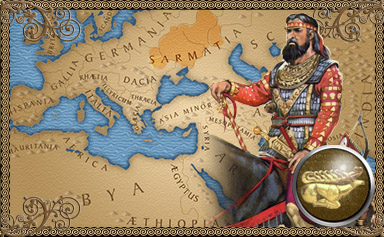 In a literal sense the Sarmatians were one of many ancient nomadic tribes dwelt in steppes on huge area between Danube on the west and Chinese borders on the east. They gradually expelled and assimilated the the Scythians with which they shared some nomadic habits, and somewhat similar way of life and culture.\n\n
The Golden Age of the Scythians began in 7th century BC when they became dominating nation in the nothern Black Sea region and conquered large territories in the Middle East. In the end of 6th century BC they defeated the invasion of Persian king Darius I in their land. The Scythians were very aggressive, they frequently raided their neighbours. Among ancient nations the Scythians were considered as perfect horsemen and archers. Many of them were mercenaries. In 3th century BC began the decline of Scythian hegemony.
In a literal sense the Sarmatians were one of many ancient nomadic tribes dwelt in steppes on huge area between Danube on the west and Chinese borders on the east. They gradually expelled and assimilated the the Scythians with which they shared some nomadic habits, and somewhat similar way of life and culture.\n\n
The Golden Age of the Scythians began in 7th century BC when they became dominating nation in the nothern Black Sea region and conquered large territories in the Middle East. In the end of 6th century BC they defeated the invasion of Persian king Darius I in their land. The Scythians were very aggressive, they frequently raided their neighbours. Among ancient nations the Scythians were considered as perfect horsemen and archers. Many of them were mercenaries. In 3th century BC began the decline of Scythian hegemony.
Dacii
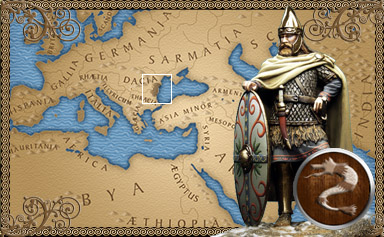 Burebistra, Thracian king of the Getae and Dacian tribes from 82/61 BC to 45/44 BC. He basically created a very large kingdom from a balkanic backwater. The Dacians still makes debate among historians about their ancestry, either Getic or a mix of Scythian, Bastarae, Northern Thracian and celtic aggregation of peoples. In any case, Dacia was in 88 BC definitely on the rise, integrating the former local kingdoms from Dromichaetes, Oroles and Rubobostes, with Bastarnae on the northeast, and Iazyges Sarmatians in the northwest. Around 61 BC Burebista expelled the Celts and moved into the middle Danube, building up an army with an Hellenisic model and also built a serie of citadels exhibiting Greek military architecture for garrisons. In 60/59 BC he defeated and conquered the Boii, followed by the destruction of the Bastarnae peoples. Around 55 BC, Burebista annexed the Greek cities on the coast of the Black Sea coast, including Olbia, Tyras, Histria, Tomis, Callatis, Odessos, Messembria, Apollonia and Dionysopolis, the his kingdom became a weatlhy empire, contributing to built an even more imposing army. However later in the civil wars, Burebista would chose the wrong contender, Pompey gaining the support of Burebista through Akornion of Dionysopolis. Caesar, and later Octavian, future Augustus will not forget it. About 100 BC became Domitian's Dacian War and Trajan's Dacian Wars and Decebalus, but's that another story.
Burebistra, Thracian king of the Getae and Dacian tribes from 82/61 BC to 45/44 BC. He basically created a very large kingdom from a balkanic backwater. The Dacians still makes debate among historians about their ancestry, either Getic or a mix of Scythian, Bastarae, Northern Thracian and celtic aggregation of peoples. In any case, Dacia was in 88 BC definitely on the rise, integrating the former local kingdoms from Dromichaetes, Oroles and Rubobostes, with Bastarnae on the northeast, and Iazyges Sarmatians in the northwest. Around 61 BC Burebista expelled the Celts and moved into the middle Danube, building up an army with an Hellenisic model and also built a serie of citadels exhibiting Greek military architecture for garrisons. In 60/59 BC he defeated and conquered the Boii, followed by the destruction of the Bastarnae peoples. Around 55 BC, Burebista annexed the Greek cities on the coast of the Black Sea coast, including Olbia, Tyras, Histria, Tomis, Callatis, Odessos, Messembria, Apollonia and Dionysopolis, the his kingdom became a weatlhy empire, contributing to built an even more imposing army. However later in the civil wars, Burebista would chose the wrong contender, Pompey gaining the support of Burebista through Akornion of Dionysopolis. Caesar, and later Octavian, future Augustus will not forget it. About 100 BC became Domitian's Dacian War and Trajan's Dacian Wars and Decebalus, but's that another story.
Last Update CATW 0.8.1 26/12/2019
7z version (767 mo) winrar version (1.1 Go)
